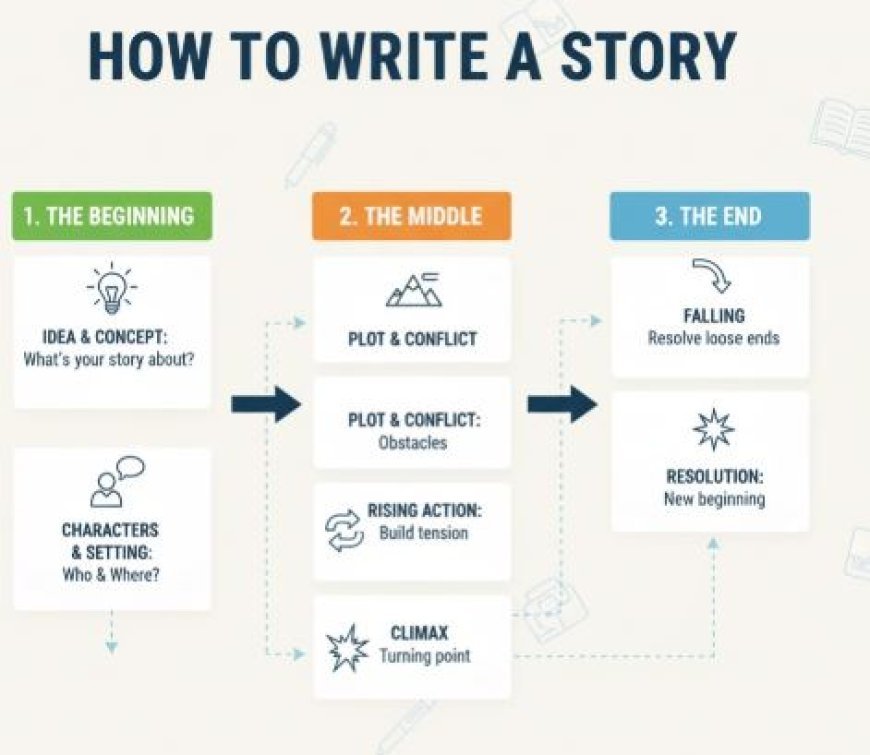HOW TO WRITE A STORY
Hook your readers! Unleash your ideas and weave them into a story that ignites imaginations.

Writing a story in English grammar can seem like a daunting task, especially for non-native speakers. However, with some tips and guidelines, anyone can write a compelling and well-written story in English. In this blog post, we will delve into the step-by-step process of writing a story in English grammar.
Step 1: Choose a plot and characters
The first step in writing a story is to decide on the plot and characters. This is the foundation of your story and will help you stay focused and organized throughout the writing process. Choose a plot that you are passionate about and that will captivate your readers. Your characters should also be well-developed and relatable to your audience.
Step 2: Write an outline
Before you start writing your story, it is essential to create an outline. This will help you stay on track and ensure that your story has a logical flow. Your outline should include the introduction, rising action, climax, falling action, and resolution. You can also include subplots and character arcs in your outline to add depth to your story.
Step 3: Pay attention to tenses and verb agreement
When writing a story in English, it is crucial to pay attention to tenses and verb agreement. Make sure to maintain consistency in your tenses throughout the story. Using the past tense is the most common in storytelling. However, if you are writing a story in the present tense, make sure to stick to it. Also, ensure that your verbs agree with the subject in number and person.
Step 4: Use proper punctuation and sentence structure
Sentence structure and punctuation are essential for expressing the tone and meaning of your writing. Use punctuation correctly by using quotation marks, commas, and periods. To keep your story interesting and give it more depth, change up the way you phrase your sentences. To write a well-rounded and engaging story, use simple, compound, and complicated sentences.
Step 5: Show, don't tell
One of the essential elements of storytelling is showing rather than telling. This means using descriptive language and vivid imagery to paint a picture for your readers. Instead of telling your readers that the character is sad, show it through their actions, thoughts, and dialogue. This allows your readers to connect with the story and immerse themselves in the narrative.
Step 6: Use dialogue effectively
Dialogue is an essential tool in storytelling. It helps to reveal the characters' personalities and move the plot forward. When writing dialogue, make sure to use quotation marks and proper punctuation. Also, use dialogue tags such as 'he said' or 'she replied' to indicate who is speaking. It is also essential to make your dialogue sound natural and realistic.
Step 7: Edit and revise
Once you have completed your story, it is crucial to edit and revise it. This involves checking for spelling and grammar errors, as well as making sure that your story flows smoothly and is well-structured. It is also helpful to read your story out loud to catch any awkward sentences or phrases. You can also ask a friend or family member to read your story and provide feedback.
Step 8: Practice and read
The more you write, the better you will become at storytelling. So, make sure to practice your writing skills regularly. It is also essential to read books and stories written in English to familiarize yourself with the language and writing style. This will help you improve your writing skills and inspire you to create unique and engaging stories.
What's Your Reaction?



































